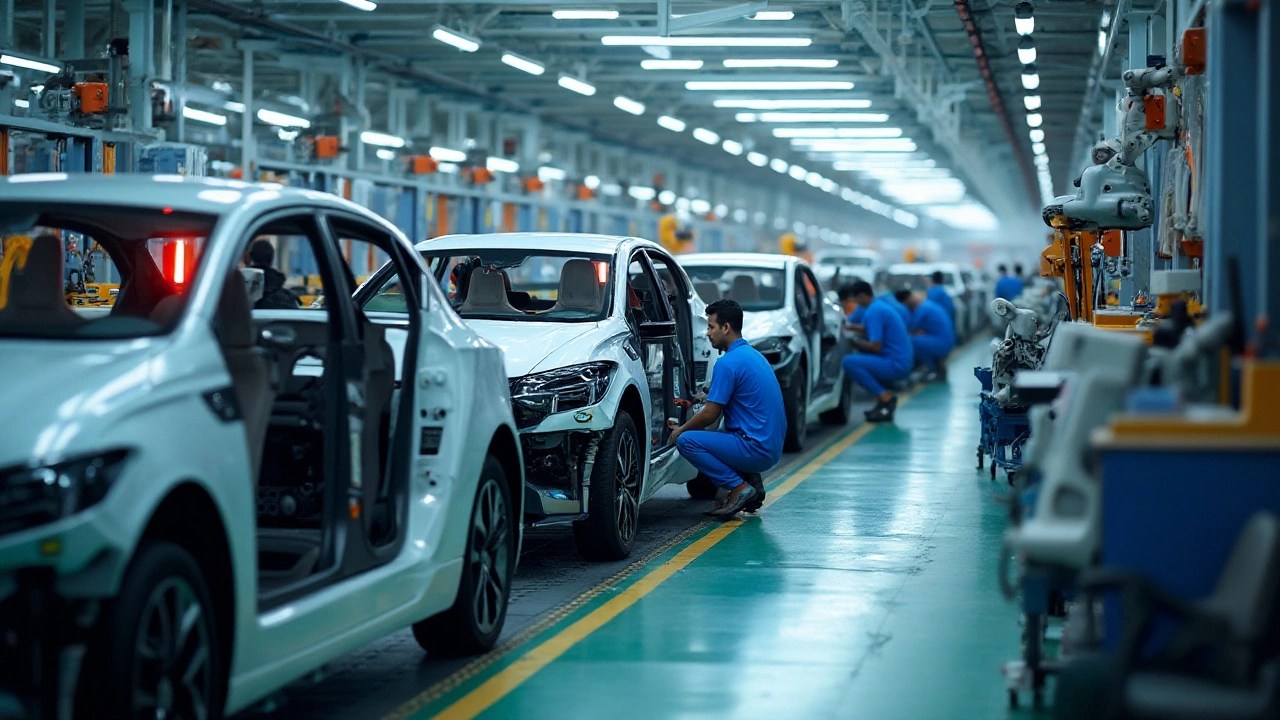Car Manufacturing in India: What’s Happening and Where It’s Headed
India is churning out more cars every year, and the numbers are growing faster than you’d think. From compact hatchbacks that zip through city traffic to big SUVs that dominate the highways, manufacturers are trying to meet a huge and varied demand.
Why does this matter to you? If you’re considering a job in the auto sector, thinking of buying a new car, or just curious about how the industry shapes the economy, understanding the basics helps you make smarter choices.
Current Landscape of Car Manufacturing
Today, the top three Indian manufacturers—Maruti Suzuki, Hyundai, and Tata Motors—account for roughly 60% of total car volume. Together they roll out close to 3 million units annually, which means a new vehicle hits the road every 10 seconds on average.
Most plants sit in industrial corridors like Gujarat, Tamil Nadu, and Maharashtra, where the government offers tax breaks and easy access to ports. This geographic clustering lowers logistics costs and speeds up parts delivery.
Domestic demand is still the main driver, but exports are picking up, especially to African and Middle‑East markets. Companies are also tweaking their models to meet stricter emission norms, shifting from older diesel engines to cleaner gasoline and hybrid powertrains.
The supply chain is a web of local vendors and overseas partners. Steel, aluminium, and electronics suppliers are feeling pressure to keep prices low while delivering higher quality components. Any hiccup—like a steel shortage—can pause an entire production line.
Future Directions and Opportunities
The biggest change on the horizon is electrification. The Indian government aims for 30% of new cars to be electric by 2030, and several manufacturers have already launched affordable EV models. Battery‑making plants are popping up in states such as Karnataka and Tamil Nadu, creating new jobs and reducing reliance on imports.
Policy incentives are also shaping the future. Reduced GST on EVs, subsidies for charging infrastructure, and relaxed import duties on components make it easier for startups to enter the market.
On the tech side, manufacturers are investing in smart factories. Sensors track production speed, AI predicts equipment failures, and robotics handle repetitive tasks. The result? Faster builds, lower waste, and higher quality cars.
If you’re eyeing a career in the industry, look for skills in data analytics, robotics, and renewable energy. These are the talents that will keep factories running smoothly as the sector evolves.
For buyers, the shift to EVs means you’ll see more options at lower price points over the next few years. Keep an eye on range, charging times, and after‑sale service—these factors will decide whether an electric car fits your daily routine.
In short, India’s car manufacturing is a fast‑moving engine of growth, powered by a mix of local demand, export ambitions, and a clear push toward greener technology. Staying informed about production trends, policy changes, and emerging tech will help you navigate this dynamic landscape with confidence.

Exploring Car Manufacturing Endeavors in Bangladesh
Understanding the potential of Bangladesh's car manufacturing capability can uncover new opportunities in the South Asian auto industry. While Bangladesh is not traditionally known for car manufacturing, it has taken significant steps towards becoming a contender. This article explores the possible emergence of car production in Bangladesh, its abilities, and the impact on the local and regional markets. Bangladesh’s developing infrastructure and investments in the automotive sector are transforming perceptions and expectations of the country's industrial potential.
